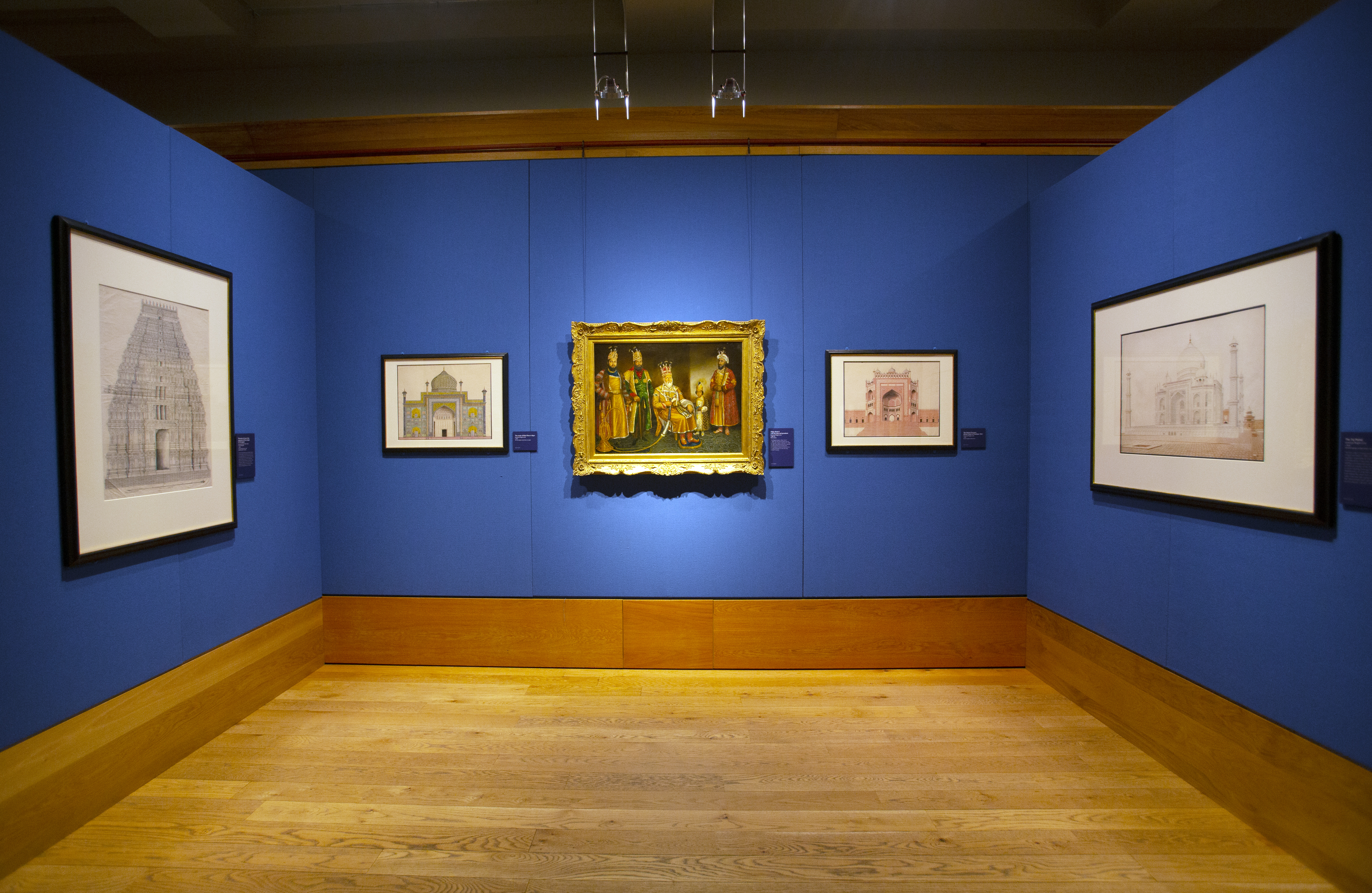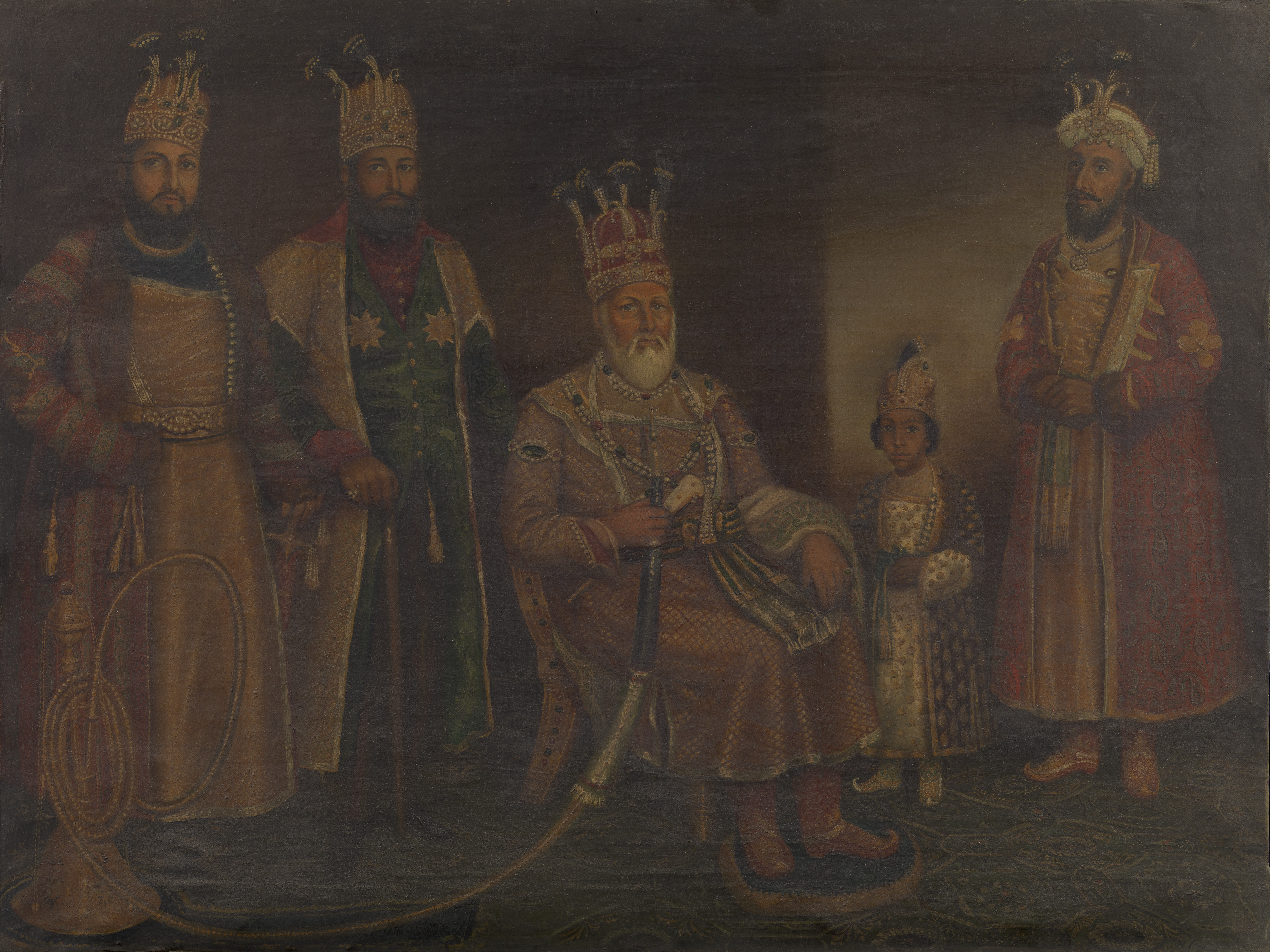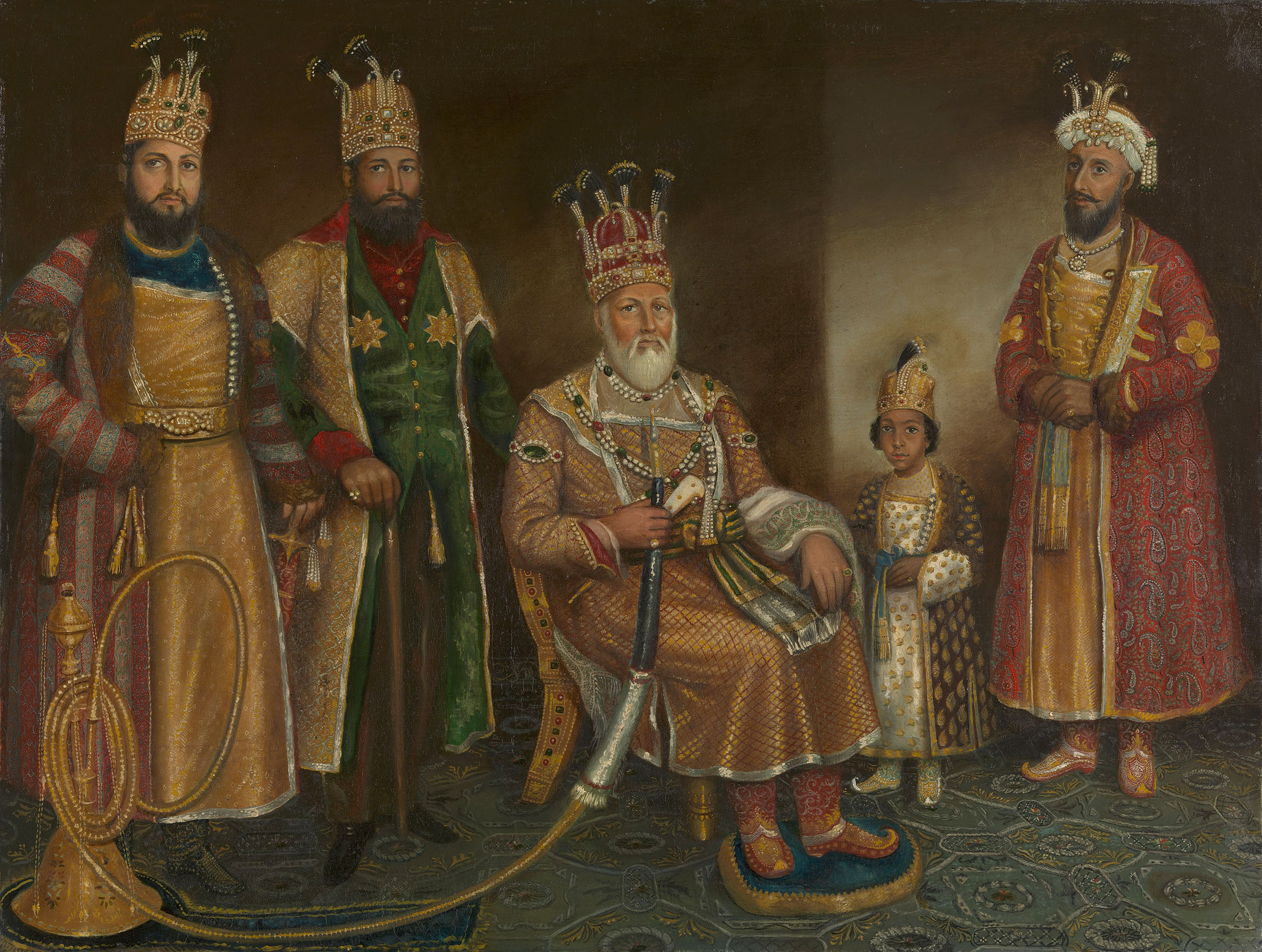Conservation of a Mughal painting

Early stages of research for Eastern Encounters revealed some hidden treasures in the Royal Collection. A painting on canvas in a gilt frame of an unnamed Indian ruler and his family was identified as an important portrait of Akbar Shah II (r. 1806–37), the penultimate Mughal emperor. Although there were no records in the Royal Archives of how it came to be in the collection, a search of contemporary newspaper reports revealed that the painting was sent as a gift from the Mughal emperor to George IV in 1830.
Over the years the painting had become very dark and was in need of a good clean. A Royal Collection paintings conservator removed the grey-black surface grime with a weak solution of tri-ammonium citrate (a cleaning solvent). Cleaning away the layers of dirt revealed the painting’s original natural resin varnish and there was a further heavy brown layer of dirt on its surface. This was removed using a slightly stronger solution of tri-ammonium citrate to reveal the original bright colours and details of the painting.
After the surface cleaning, the painting was brushed with a layer of a synthetic varnish to improve its saturation. Finally, the conservator inserted a conservation board behind, but not touching, the canvas to reduce any vibration in transit.









